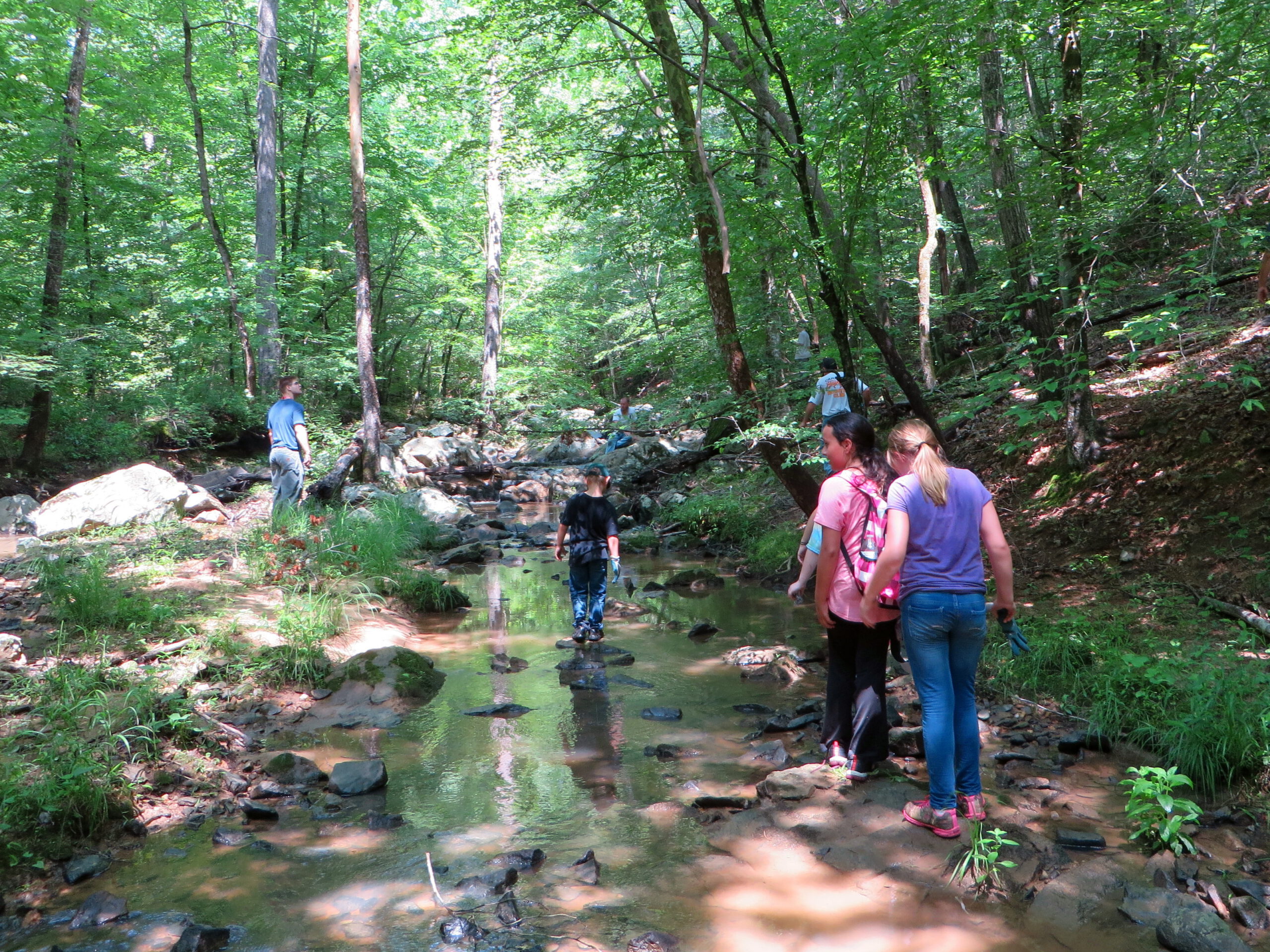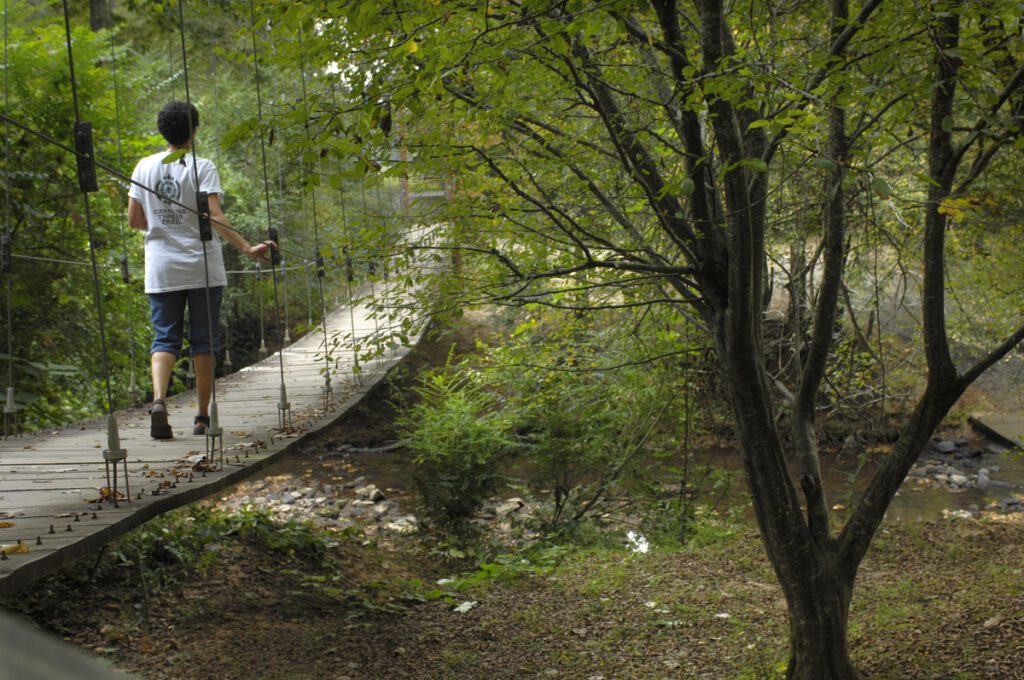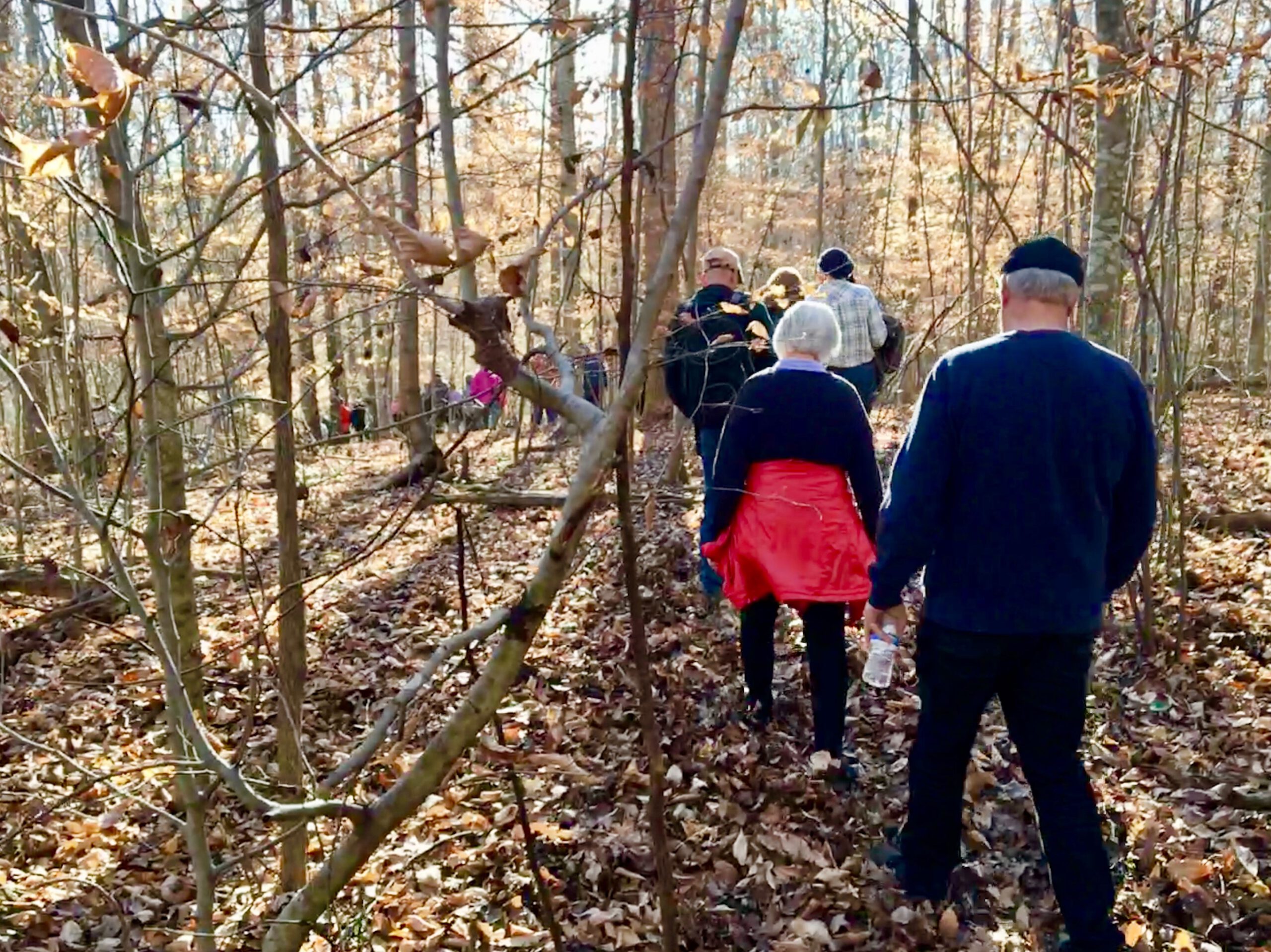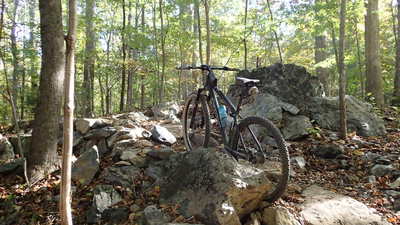
The concept of land trusts dates to Victorian England, when the rich and powerful used the legal device to obscure land ownership and thus avoid taxes. The more modern notion of land trusts — as a way to protect and preserve our special outdoor places, dates to the 1970s and early ‘80s, when land in this country was being gobbled up by development. In North Carolina alone, more than 400,000 acres and nearly 2,500 separate locations have been saved by North Carolina’s 24 land trusts, according to the Conservation Trust for North Carolina, which both saves land and acts as an umbrella organization for the state’s local land trusts.
During the initial years of the modern land trust, lands deemed to have special ecological significance were purchased and squirreled away, protected both from the bulldozer and from the people who might appreciate what these places had to offer.
That thinking began to change in the 1990s, when the federal and state funds that had been used to save these lands began to dry up. The land trusts began taking their case for preservation directly to the public by opening up these lands to low-impact exploration. If we let people in to see the work we’re doing, they’ll be more inclined to help, went the reasoning.
In 1992, when National Trails Day was conceived, we decided it was a prime opportunity to help the state’s land trusts and the work they do. So we instituted an “Earth tax,” of sorts, on everything we sold on National Trails Day. Ever since, we’ve been giving a percentage of sales to local land trusts; to date, we’ve raised more than $500,000 for land trusts in North Carolina and Virginia.
The efforts of our local land trusts have created some of the best places to explore in the region. For a variety of reasons, they also happen to be some of the least visited. Here are six examples that provide a good cross section of the recreational opportunities to be had on land trusts properties.

1. Catawba Lands Conservancy
Carolina Thread Trail
Charlotte
Spearheaded by the Catawba Lands Conservancy, this effort to link 15 counties in North Carolina and South Carolina with 1,500 miles of trail has led to a wave of preservation, especially along the waterways where most of the trail runs (in addition to about 260 miles of trail on the ground, there’s an addition 170 miles of “blueways,” or paddle trail). While the Catawba Lands Conservancy works primarily to help make trail connections between adjoining communities, they’ve also preserved six areas along the the Thread Trail, including the Seven Oaks Preserve in Belmont with 2.8 miles of hiking trail. Coupled with trail in the adjoining Daniel Stowe Botanical Garden, you’ve got a 5-mile hike. And so the thread grows.
For more information on the Carolina Thread Trail, go here. For more on the Catawba Lands Conservancy, go here.

2. Eno River Association
Confluence Natural Area
Efland
Since 1966 when it arose from an effort to block construction of a dam on its namesake river, the Eno River Association has saved about 3,700 acres along the Eno and Flat riverz. Much of that land has become part of Eno River State Park. But this month, the association opened the 200-acre Confluence Natural Area in Orange County. Currently, the preserve has about 3 miles of trail that explore the area where the East and West forks of the Eno River converge, an area of European settlement dating to the late 1700s. Like the trails downstream in the state park, these explore both the banks of the river and the ridges above. Confluence Natural Area is currently open Saturdays and Sundays, from dawn to dusk.
For more information and directions, go here.

3. Triangle Land Conservancy
Brumley Family Nature Preserve
Chapel Hill
The Triangle Land Conservancy has been at the forefront of preservation trends since purchasing its first property, the 275-acre White Pines Nature Preserve south of Pittsboro in 1987. That preserve quickly became open to public, as have six more in the years since. Last year, the TLC broke new ground with its 613-acre Brumley Forest Nature Preserve between Chapel Hill and Hillsborough. In addition to 8 miles of hiking trail, it has 7.5 miles of trail open to both hiking and mountain biking. In the year since it opened, the network of linked loops has emerged as one of the most popular ride destinations for beginner and intermediate riders in the western Triangle: after a nice warmup on the Wood Duck Way loop, you’ll find navigable rock gardens on the Springhouse Loop and rollicking whoop-de-doos on the Buckeye Loop.
For more information and directions, go here.

4. Conservation Trust of North Carolina
Jumpinoff Rock Overlook
Milepost 260.3, Blue Ridge Parkway
We tend to think of the National Park Service when we think of the Blue Ridge Parkway. Understandable, since the NPS manages the Parkway. But it only manages a narrow swath of land along the parkway, and sometimes some true gems lie just outside that swath. This is especially true when it comes to overlooks, those pullouts along the way that are intended to give you a chance to pull over and enjoy the view. Or to take a short hike to discover a hidden treasure. Such is the case at the Jumpinoff Rock Overlook, Milepost 260.3, where a purchase of 63 acres and construction of a half-mile trail by the Conservation Trust for North Carolina make it possible to hike through a thick forest of oak, poplar, maple, dogwood and rhododendron to an even better view of the Blue Ridge Escarpment as it rolls downhill into the Piedmont.
You’ll find the Jumpinoff Rock Overlook at Milepost 260.3 of the Blue Ridge Parkway.
5. Tar River Land Conservancy
Ledge Creek Forest Conservation Area
Granville County
Who doesn’t love a good surprise? Like driving I-85 north of Durham through the flat farmland of the coastal plain thinking, “They say there’s a canyon our here — but where?” You continue to think this getting off the highway at Stem on NC 56, then taking increasingly smaller roads for several miles until your GPS tells you you have arrived at the Ledge Creek Forest Conservation Area. You’re still wondering even as you head down the Pond Trail, then take a right on the Ledge Creek Trail and walk another hundred yards or so, round a bend and — whoa! There, Ledge Creek does indeed carve a steep canyon that plunges 100 feet below the surrounding countryside. It may be a short run of less than a quarter mile, but it’s course careening down a boulder field will have you thinking of an Appalachian creek — and of shedding your shoes and wading in on a hot summer’s day.
For more information on the Tar River Land Conservancy and on Ledge Creek Forest, go here.

6. Piedmont Land Conservancy
Knight Brown Nature Preserve
Rockingham County
Sometimes a special piece of land comes into the possession of a land trust because the owner just can’t bear the thought of its beauty being destroyed. Such is the case with the Knight Brown Nature Preserve. Cecilia Brown inherited what would become Knight Brown from her partner, Paul Knight, who was from Stokesdale. She couldn’t bear the thought of the land being altered, she found the Piedmont Land Conservancy on the internet, and a short time later, in 2008, she’d sold the property to the PLC, eventually becoming the trust’s first preserve open to the public. Hiking the preserves three miles of trail, it’s easy to understand her decision. Hike counterclockwise from the parking lot on the Beechwood Bottom Loop and the preserve’s special nature is immediately clear, unfolding in a majestic slope of old beech trees. Reach the valley through which Belews Creek flows and you’re immediately struck by the hills rising steeply on either side, hills accessed by the Creekside Loop and the Leatherwood Loop. The new Poet’s Trail follows a draw back most of the way to the trailhead.
For more information on the PLC and Knight Brown, go here.
Resources
To learn more about North Carolina’s land trusts and properties you can explore, visit the Conservation Trust for North Carolina website here.
Read more about our land trusts and our commitment to them on National Trails Day, here.
